Responsible for transferring your pedal power to the trail, mountain bike gears literally make your wheels go round.
Understanding the tech, gear ratios and theory involved will help you pedal smoother, faster and further.
However, for those new to the sport, the gears on your mountain bike may be different from other types of bike gears you've used in the past. In this guide, we explore what mountain bike gears are, how best to use them and how to pick the best gear on the trail.
What are gears on a mountain bike?

When you push down on the pedals of your mountain bike, the power you create is transferred to the rear wheel by the drivetrain, propelling the bike forward.
How easy it is to turn the pedals is determined by the gear ratio between your front chainring and rear cog. This gear ratio also determines your cadence (how fast you turn the pedals) and how much forward distance is achieved per pedal stroke.
Mountain bike gears enable you to choose your gear ratio to match the steepness of the trail, how much effort you want to give and how much distance you want to cover per pedal stroke.
By matching your gear to the steepness of the trail, you can stay in the most efficient cadence for you and minimise excess power expenditure.
How do mountain bike gears work?
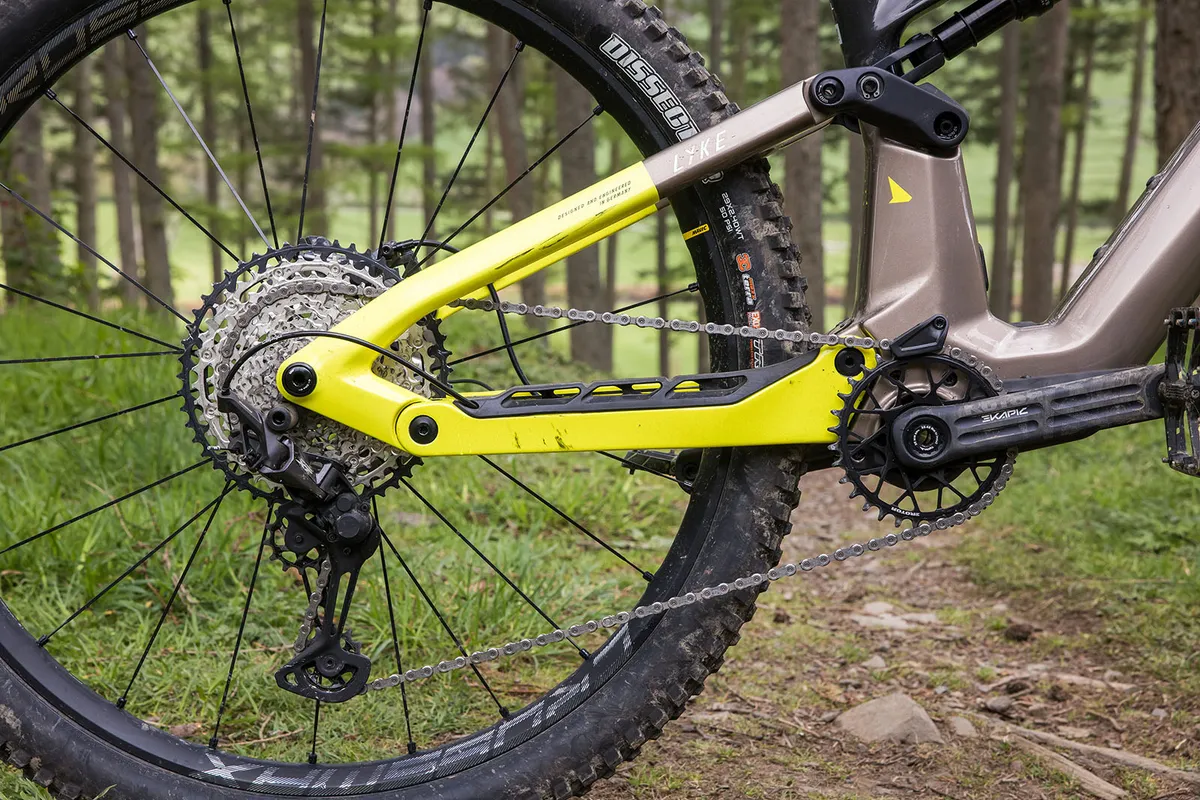
By far the most common gear system found on modern mountain bikes is the external 1x drivetrain.
This drivetrain is made up of a singular front chainring (hence the ‘1x’ name) and a wide-range rear cassette. The gear is changed by a rear derailleur, which is actuated by a handlebar-mounted shifter.
When the shifter is pressed, the derailleur moves the chain up or down the cassette, into a bigger or smaller gear. In most cases, the derailleur is driven by a cable that connects it to the shifter.
However, in the case of electronic MTB groupsets such as SRAM’s Eagle Transmission, the derailleur is activated by a wireless signal and moved by an integrated servo motor.
Also sometimes seen on the trail are older 2x and 3x drivetrains. Rather than having a single chainring and an ultra wide-range cassette, these drivetrains rely on a front derailleur to shift between chainrings and have a smaller rear cassette.
The downsides of a 2x or 3x drivetrain for mountain biking are increased complexity, reduced chain retention and gear range, and extra weight.
How to use gears on a mountain bike
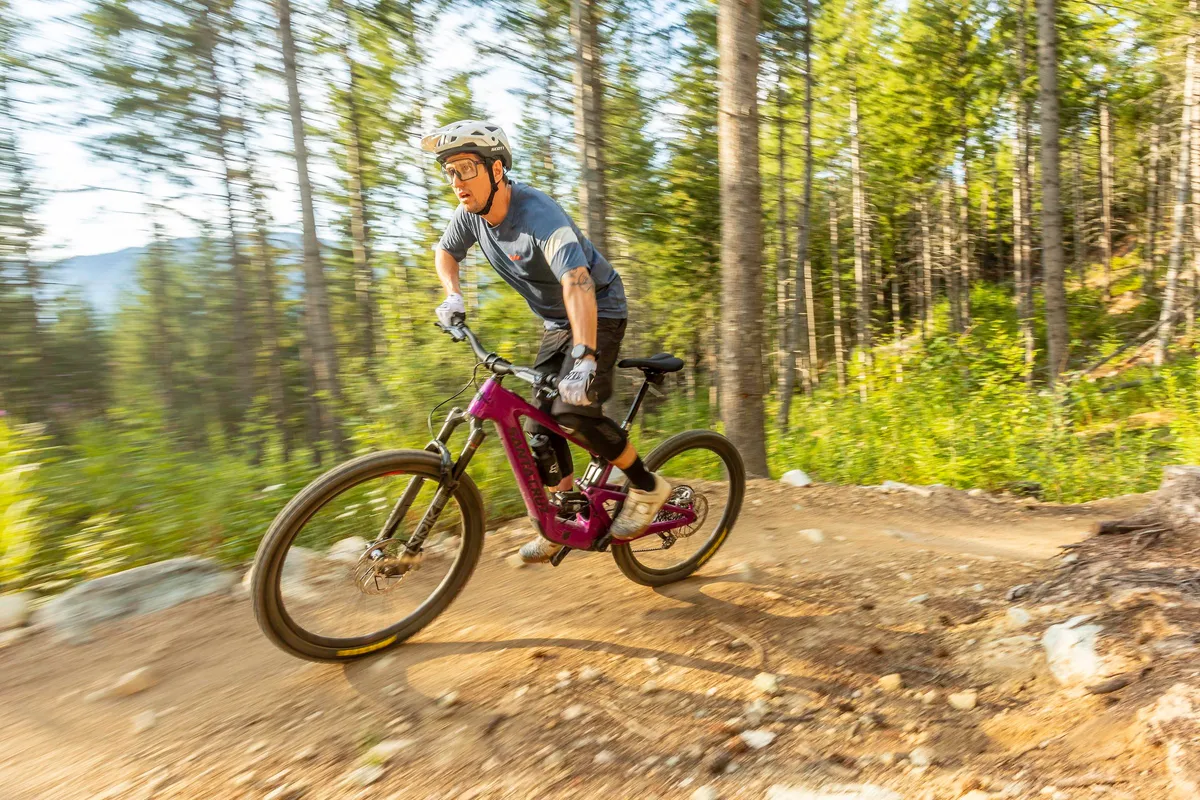
Now that we have an overview of how mountain bike gears work, let’s take a look at how to use them on the trail.
How to shift gears on a mountain bike
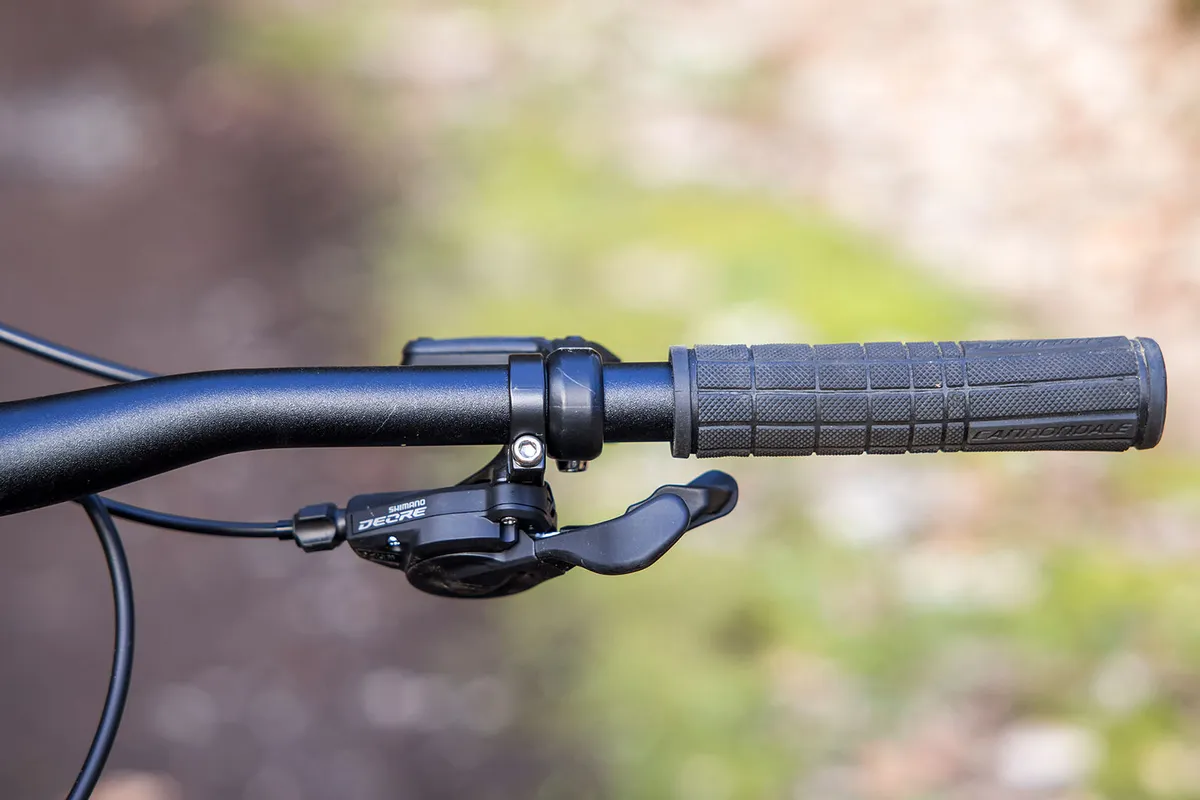
As we’ve learned, you can change gears on a mountain bike by using the handlebar-mounted shifter. This shifter will have two triggers (sometimes also called ‘paddles’), which enable you to shift into a lower or higher gear using your thumb or forefinger.
It’s important to take a moment to familiarise yourself with the location and action of the shifter so that when it comes to using your gears out on the trail, you can confidently make your gear shift without having to look down at your shifter.
It’s also important to minimise unnecessary load on the gears when shifting. This will prolong their lifespan, and reduce the necessary frequency of service and the likelihood of a mechanical such as a snapped chain.
In general, it’s good practice not to shift into a lower (easier) gear while putting lots of power through the pedals. At a minimum, it sounds and feels horrible, but if pushed to extremes, it could damage the chain.
To avoid this, try shifting into the correct gear before starting a steep climb, rather than part-way up it. Shifting into a higher (harder) gear under power is less problematic, but a little bit of care when it comes to timing your shift will go a long way.
Which gear should I use and when?
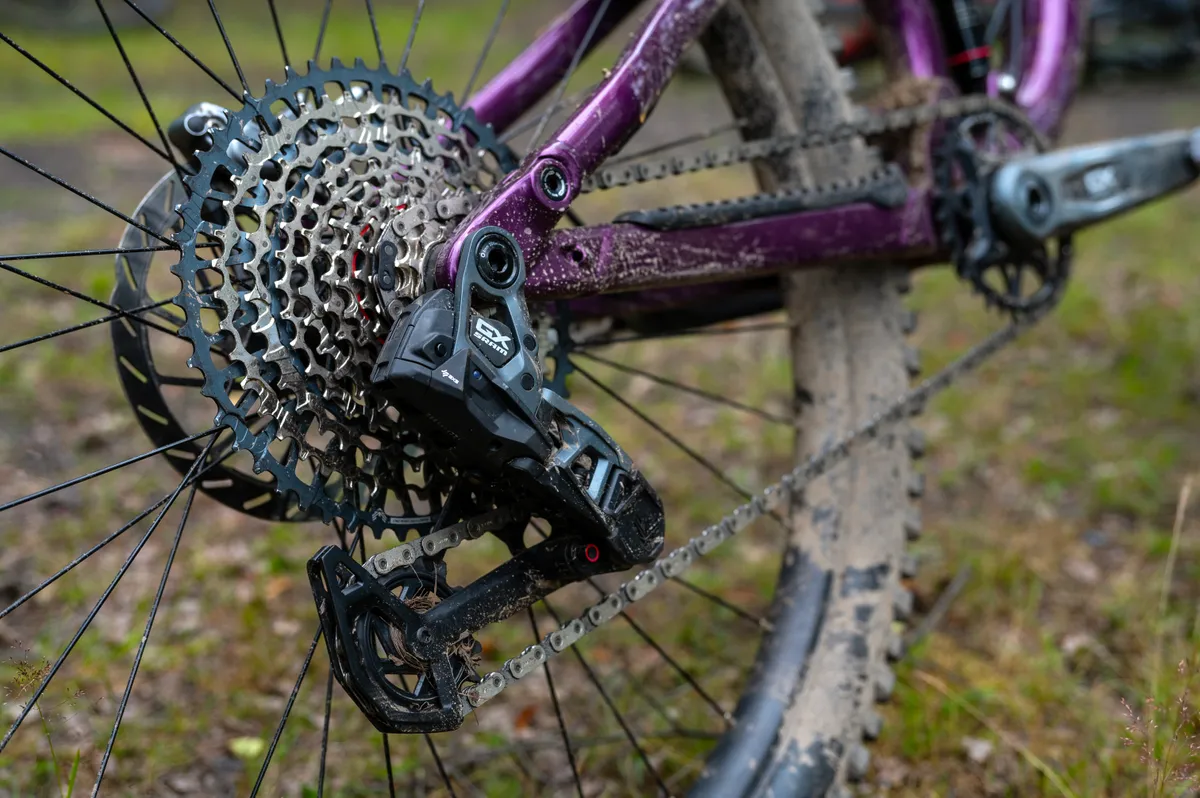
Good gear choice is all about efficiency. Ideally, you want to be in a gear that enables you to spin your legs at a comfortable cadence while using just enough power to generate the necessary speed for the trail ahead.
This is especially important when riding undulating singletrack. Too high a gear and you’ll be straining to turn the pedals, too low a gear and you’ll be spinning your legs without making much progress.
Tips for choosing the right MTB gear
There’s no one-gear-fits-all, and your gear choice will depend on your fitness, preferred cadence and the steepness of the trail you’re riding. But the following tips, based on cadence, will help you choose the right gear and save energy in the process.
1. Long gradual climbs
If you’re riding a long fireroad climb it’s best to spin at around 80 to 90 revolutions per minute (RPM).
Resist the temptation to grind a big gear — it might impress your mates but you’ll burn your legs out more quickly.
2. Short technical ascents
On shorter, more technically challenging climbs with obstacles such as roots, rocks and tight turns, aim for around 60rpm.
This will give you good traction if it’s slippery and make it easier to lift your front wheel up onto ledges.
3. Getting up to speed
If you’re spinning out or pushing a gear that’s too hard, you won’t be able to apply maximum power to the pedals when accelerating.
Spin hard up to about 100rpm, then drop down a gear at a time at the back. You can downshift under power.
4. Bigger isn’t better
Pushing too big a gear is tough on the legs and can also make it harder to negotiate trail features such as roots and stumps, and to recover after unexpected losses of grip.
Mountain bike gear ratios

The number of gears on your cassette doesn’t mean much if it doesn’t have a wide gear range.
The range of a cassette is determined by dividing the number of teeth on the biggest cog by the number of teeth on the smallest one.
Take the 12-speed SRAM GX Eagle T-Type cassette, for example. This has a gear range of 10t to 52t, so we can figure out its gear ratio using the formula below:
- 52/10 = 5.2 = 520% range
So, where does chainring choice come into play? As we’ve established, your choice of cassette determines the gear range of your 1x drivetrain. By choosing your chainring, you can then shift the gearing up or down, depending on your preferences.
A small chainring, such as a 28t or 30t, will give you the lowest (easiest) possible gear for climbing. A big chainring, such as a 34t or 36t, will enable you to pedal faster in the highest (hardest) gear.
Most mountain bikes come with a 32t chainring as standard, because it provides a solid middle ground.
If you want to find out what gear ratio you're running, you just have to divide the number of teeth on your chainring by the number of teeth on your chosen rear cog.
For example, if you had a 10-52t cassette and a 32t chainring, and wanted to work out your gear ratio in your lowest and highest gear, the equations would be as follows:
- Lowest gear ratio: 32/52 = 0.615
- Highest gear ratio: 32/10 = 3.2
Now, let’s take a quick look at the gear ratios of an older 2x10 drivetrain, such as Shimano’s 2013 SLX. Back then, the drivetrain came with a set of 38/24t chainrings and an 11-36t cassette.
Using the same formulas as above, we can work out the cassette’s gear range, and the lowest and highest gear ratio of the drivetrain.
- Gear range of the 11-36t cassette: 36/11 = 3.27 = 327% range
- Lowest gear ratio: 24/36 = 0.666
- Highest gear ratio: 38/11 = 3.45
Why aren’t my gears working well?
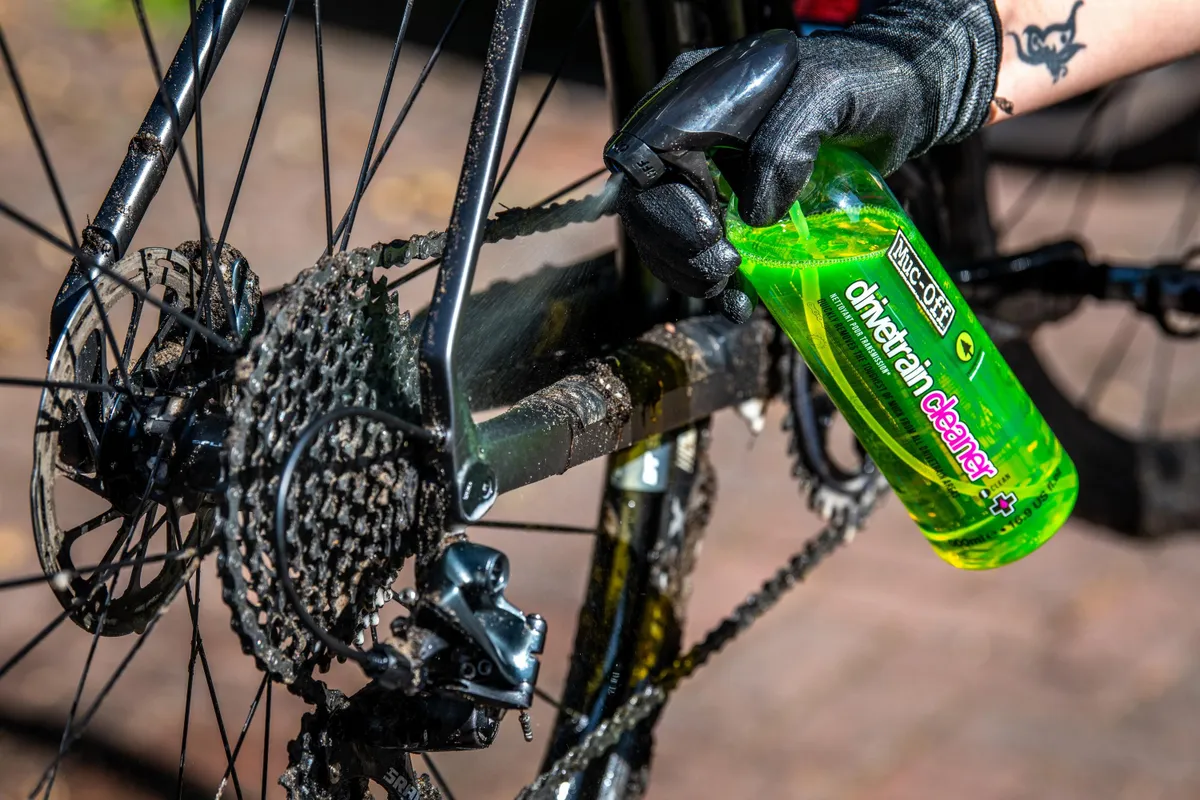
As with all mountain bike components, regular maintenance is crucial to keeping your gears running smoothly.
Cleaning and lubing your drivetrain after every ride is recommended, but even with the utmost care there are still a few things that could keep your gears from performing at their best.
New gear cables are susceptible to cable stretch, where the gear cable grows under load during its first few uses. A stretched cable will cause inconsistent and vague shifting, and can usually be fixed by using the barrel adjusters on the shifter or derailleur to tension the cable.
Sometimes, other issues can arise due to wear and tear while riding, such as derailleurs getting knocked out of alignment or limit screws needing re-adjusting. In this case, taking the time to fully index your gears will likely fix the problem or highlight what needs to be done to rectify it.
A heavily worn chain also causes poor shifting performance, as well as leaving you at risk of a snapped chain. Continued use of a worn chain also accelerates wear on the rest of your drivetrain, so it’s important to keep on top of it by regularly checking if your chain needs replacing.
What are the benefits of electronic MTB drivetrains?
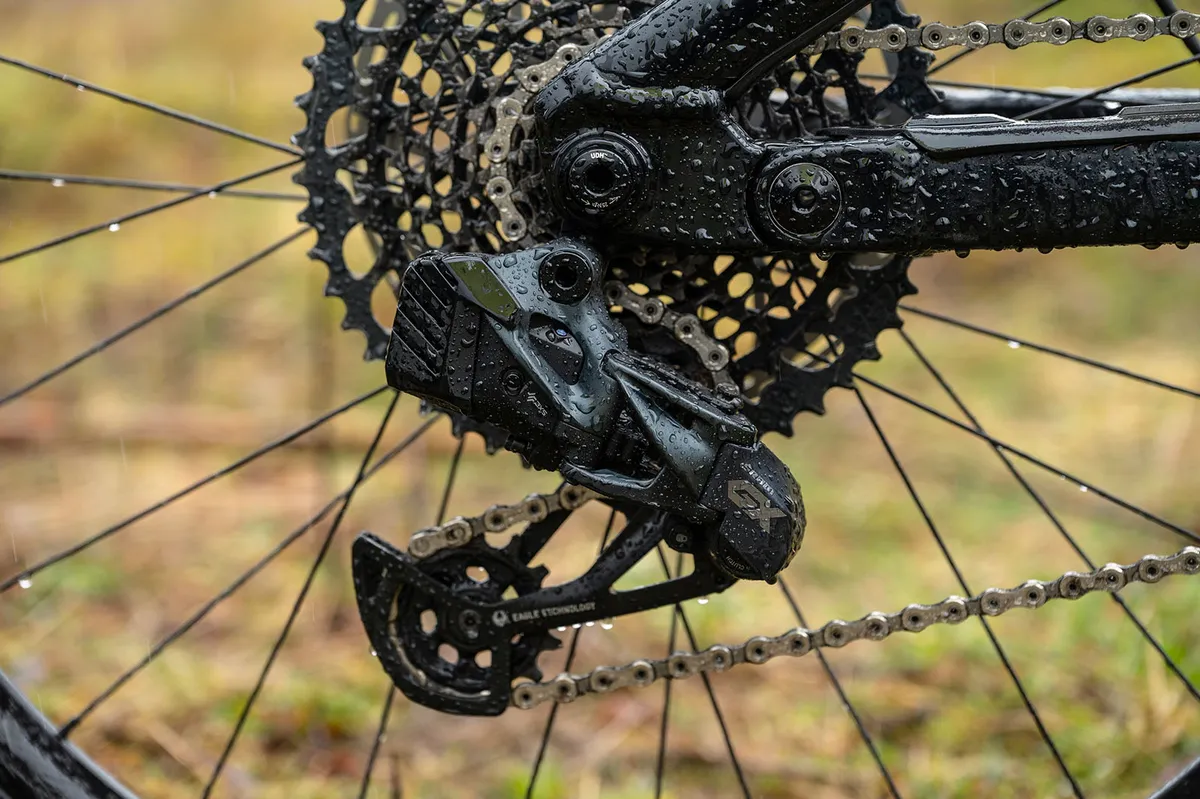
As the latest innovation in mountain bike gearing, there is a lot of hype surrounding wireless electronic drivetrains.
The primary benefit of electronic shifting over mechanical gears is increased consistency. Gear cables can stretch over time, meaning they have to be re-tensioned in order to provide crisp shifts.
Electronic shifting, on the other hand, is accurate and precise every time. Once correctly installed, it should need little to no adjustment.
Shifting happens almost instantly on a wireless drivetrain, enabling riders to shift faster and more accurately on technical sections of trail.
Wireless drivetrains come at a hefty price tag, although we are seeing the technology trickle slowly down to more affordable options.
You’ll also have to remember to make sure your batteries are charged before heading out for a ride, or risk getting stuck in one gear if you run out of juice.
What about mountain bike gearboxes?

Dirt, puddles and grime can wreak havoc on conventional mountain bike drivetrains. Gearboxes, on the other hand, are fully enclosed and sealed from the elements. So why haven’t they taken hold of the mainstream MTB market?
To be usable on mountain bikes, gearboxes have to be mounted to the frame’s bottom bracket area. Rear-hub gears (as seen on some city bikes) are out of the question due to their unfavourable weight distribution. This need for a custom gearbox-compatible frame creates the first barrier.
Gearboxes are also heavier than external drivetrains and can be noticeably draggy. Shifter ergonomics are still poor compared to modern triggers and you can only shift while coasting.
However, it’s hard to deny their durability, especially in challenging conditions. Removing the weight of the derailleur and cassette from the rear wheel also boosts suspension performance dramatically.
While they offer promising benefits, there are still some crucial developments needed before we can see gearboxes challenging external drivetrains as the new MTB standard.
